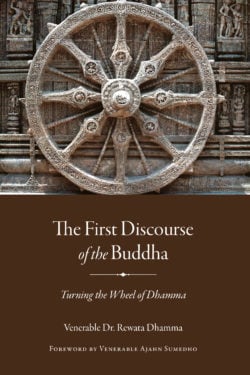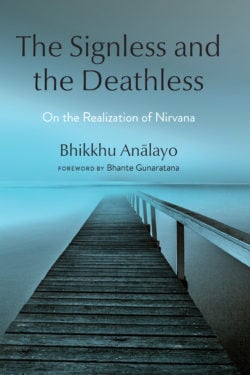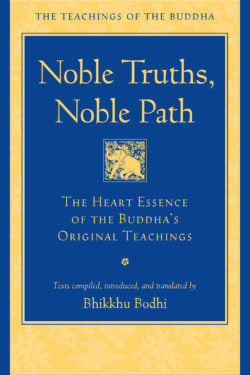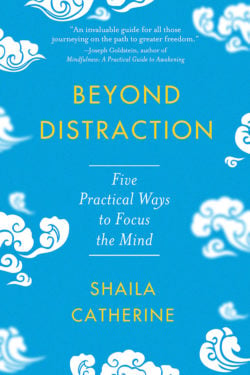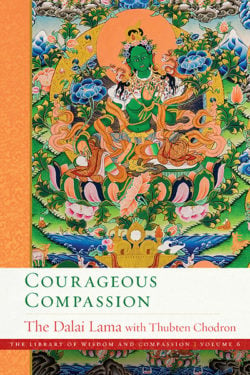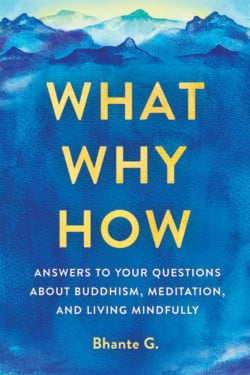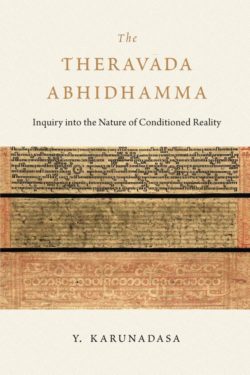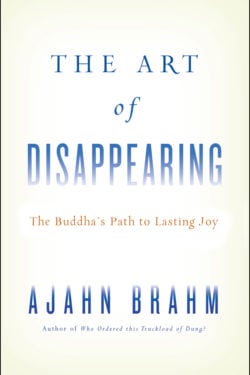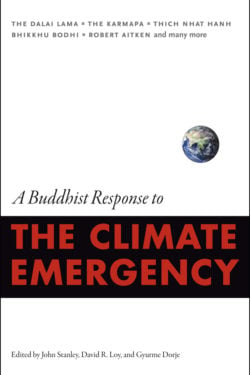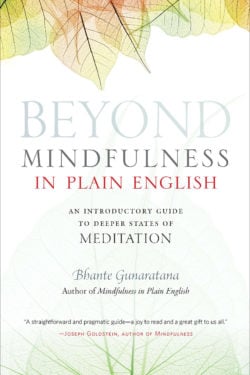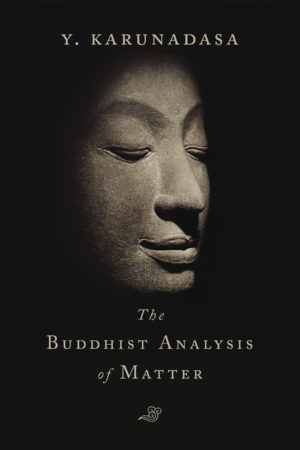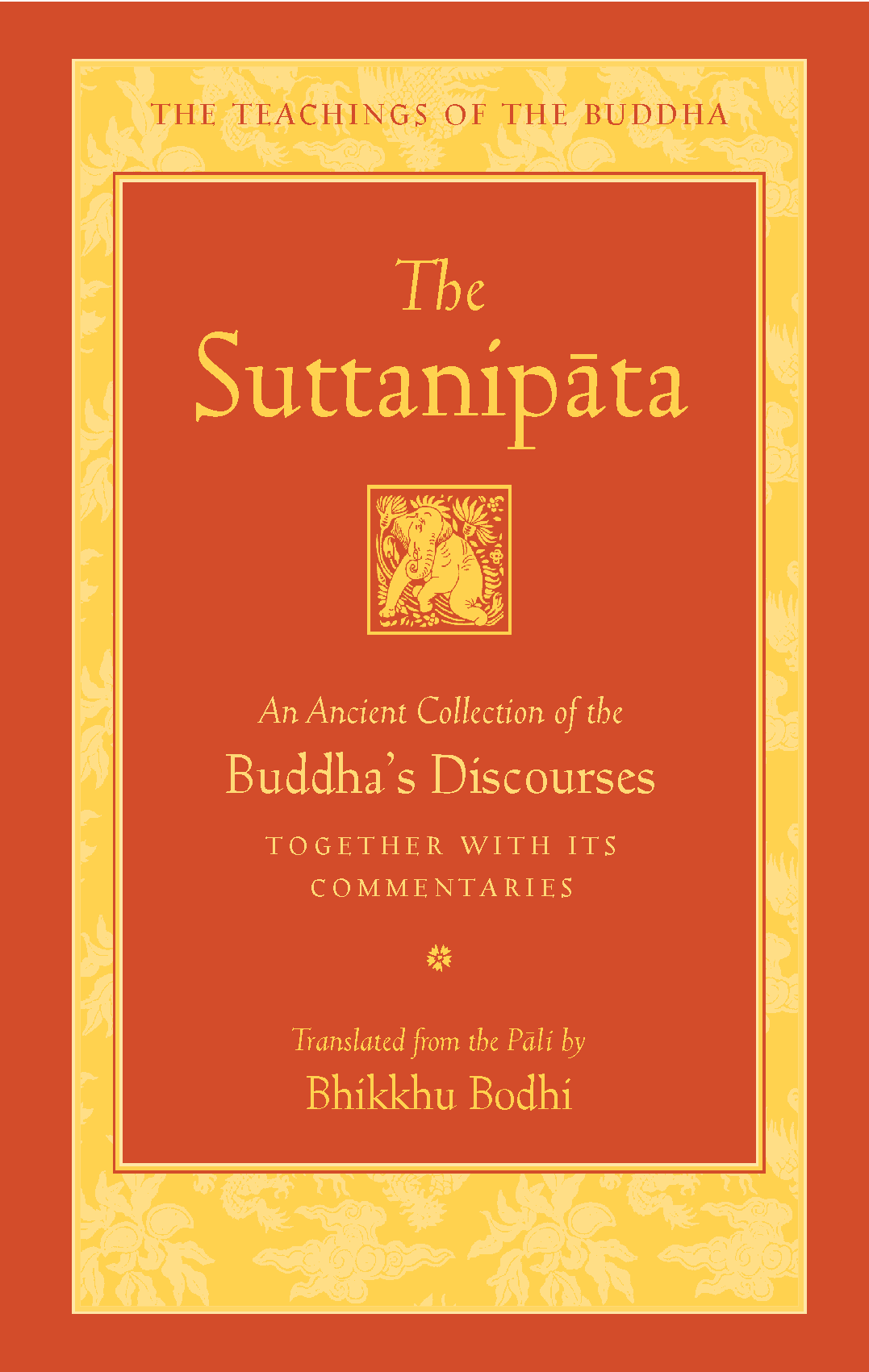
THE SUTTANIPāTA
The Suttanipāta, or “Group of Discourses” is a collection of discourses ascribed to the Buddha that includes some of the most popular suttas of the Pāli Canon, among them the Loving-Kindness Sutta. The suttas are primarily in verse, though several are in mixed prose and verse. The Suttanipāta contains discourses that extol the figure of the muni, the illumined sage, who wanders homeless completely detached from the world. Other suttas, such as the Discourse on Downfall and the Discourse on Blessings, establish the foundations of Buddhist lay ethics. The last two chapters—the Aṭṭhakavagga (Chapter of Octads) and the Pārāyanavagga (The Chapter on the Way to the Beyond)—are considered to be among the most ancient parts of the Pāli Canon. The Aṭṭhakavagga advocates a critical attitude toward views and doctrines. The Pārāyanavagga is a beautiful poem in which sixteen spiritual seekers travel across India to meet the Buddha and ask him profound questions pertaining to the highest goal.
The main commentary, the Paramatthajotikā, relates the background story to each sutta and explains each verse in detail. The volume includes numerous excerpts from the Niddesa, an ancient commentary already included in the Pāli Canon, which offers detailed expositions of each verse in the Aṭṭhakavagga, the Pārāyanavagga, and the Rhinoceros Horn Sutta.
Translator Bhikkhu Bodhi provides an insightful, in-depth introduction, a guide to the individual suttas, extensive notes, a list of parallels to the discourses of the Suttanipāta, and a list of the numerical sets mentioned in the commentaries.
- Learn more about the Teachings of the Buddha series.
- Hardcover
- 1616 pages, 5.50 x 8.75 inches
- $80
- ISBN 9781614294290
- eBook
- 1616 pages
- $55.99
- ISBN 9781614294542
Discover More
The First Discourse of the Buddha
Two months after the Buddha attained enlightenment under the Bodhi Tree, he traveled to Sarnath, India. There he delivered his first discourse to a group of five ascetics in Deer Park. This teaching, known as the “First Turning of the Wheel of Dhamma” or the Dhammacakka Sutta, contains the foundational teachings of all Buddhism. In it the Buddha explains the way to freedom from suffering through the teachings of the Four Noble Truths and the Noble Eightfold Path.
With this translation and its verse-by-verse commentary, Dr. Dhamma brings fresh insight to the Dhammacakka Sutta. Drawing on the rich Burmese monastic scholarly tradition and his own experiences as a vipassanā practitioner, Dr. Dhamma makes clear the precise steps necessary for the realization of the teachings contained in the Buddha’s first discourse.
The Signless and the Deathless
An insightful examination of the end of suffering drawing much-needed attention to two overlooked factors of Nirvana: signlessness and deathlessness. Includes a foreword by Bhante Gunaratana.
Nirvana is at once a critical part of the Buddhist path and a concept difficult to fully understand for Buddhist practitioners. Canonical texts broach this mysterious and essential idea in a variety of ways, whether in the form of metaphor or literary description. In The Signless and the Deathless: On the Realization of Nirvana, scholar-monk Bhikkhu Anālayo sheds light on two key aspects of Nirvana that have gone underappreciated: signlessness and deathlessness.
Commanding an extraordinary mastery of canonical Buddhist languages, Venerable Anālayo breaks new ground, or rediscovers old ground, by presenting a new way of approaching Nirvana, based on the Buddha’s teachings on how our minds construct experience. This novel treatment, backed up by meticulous academic expertise, is valuable for scholars and practitioners alike.
Through practicing bare awareness…realizing Nirvana entails “a complete stepping out of the way the mind usually constructs experience.”
Noble Truths, Noble Path
Bhikkhu Bodhi’s newest anthology!
Brilliantly translated by Bhikkhu Bodhi, this anthology of suttas from the Saṃyutta Nikāya takes us straight to the heart of the Buddha’s teaching on liberation through the four noble truths and the noble eightfold path—the two mainstays of Buddhist doctrine that illuminate the nature of things by generating direct insight into the teachings. These suttas all pertain to the ultimate good, the attainment of nibbāna or liberation. They illuminate the Buddha’s radical diagnosis of the human condition—and more broadly, the condition of all sentient existence—in light of the four noble truths. They underscore the pervasive flaws inherent in the round of rebirths, trace our existential predicament to its deepest roots, and lay out the path to unraveling our bondage and winning irreversible release. Ven. Bodhi arranged the chapters, each with its own introduction, to provide an overview of the Dhamma that mirrors the four noble truths, thus enabling students of Early Buddhism to see into the heart of the Buddha’s teachings as directly and clearly as possible.
For those interested in the Pāli language, Bhikkhu Bodhi provides linguistic and grammatical explanations of the suttas included in this book in his Reading the Buddha’s Discourses in Pāli.
Learn more about the Teachings of the Buddha series.
Beyond Distraction
The mind can be a potent tool, used to guide extraordinary achievements, inspire good works, and incline your spiritual path toward peace and awakening. But the mind can also produce thoughts that lead to suffering. For many people, thoughts run rampant and seem to oppress or control their lives. Even the Buddha tells us that before his enlightenment, he sometimes found his mind preoccupied by thoughts connected with sensual desire, ill will, and harm. But he figured out how to respond to thoughts skillfully and developed a step-by-step approach to calm the restless mind. Now, Insight Meditation teacher Shaila Catherine offers an accessible approach to training the mind that is guided by the Buddha’s pragmatic instructions on removing distracting thoughts. Drawing on two scriptures in the Middle Length Discourses of the Buddha, Shaila shows you how to overcome habitual modes of thinking, develop deeper concentration, and discover the insights into emptiness that are vital for a liberating spiritual path.
Following the Buddha’s pragmatic approach, Shaila guides you through five steps for overcoming distraction and focusing the mind:
- Replace unwholesome thoughts with wholesome thoughts.
- Examine the dangers of distracting thoughts.
- Avoid it, ignore it, forget it.
- Investigate the causes of distraction.
- Apply determination and resolve.
Each chapter includes exercises and reflections to help you cultivate the five steps to deeper concentration. You’ll learn about your mind and develop your ability to direct your attention more skillfully in meditation and daily activities. And ultimately, you’ll discover for yourself how these five steps boil down to one key realization: In the moment you recognize that a thought is just a thought, you will find yourself on the path to a life of remarkable freedom.
Courageous Compassion
Courageous Compassion, the sixth volume of the Library of Wisdom and Compassion, continues the Dalai Lama’s teachings on the path to awakening. The previous volume, In Praise of Great Compassion, focused on opening our hearts with love and compassion for all living beings, and the present volume explains how to embody compassion and wisdom in our daily lives. Here we enter a fascinating exploration of bodhisattvas’ activities across multiple Buddhist traditions—Tibetan, Theravāda, and Chinese Buddhism.
After explaining the ten perfections according to the Pāli and Sanskrit traditions, the Dalai Lama presents the sophisticated schema of the four paths and fruits for śrāvakas and solitary realizers and the five paths for bodhisattvas. Learning about the practices mastered by these exalted practitioners inspires us with knowledge of our minds’ potential. His Holiness also describes buddha bodies, what buddhas perceive, and buddhas’ awakening activities.
Courageous Compassion offers an in-depth look at bodhicitta, arhatship, and buddhahood that you can continuously refer to as you progress on the path to full awakening.
Learn more about the Library of Wisdom and Compassion series.
Abiding in Emptiness
Before the growth of the Mahāyānā and the Perfection of Wisdom, the Buddha gave his own teachings, to his attendant Ānanda, on the importance of emptiness (Pāli suññatā, Sanskrit śūnyatā) in formal meditation and everyday practice. In this volume, renowned scholar-monk Bhikkhu Anālayo explores these teachings and shows us how to integrate them into our lives.
Bhikkhu Anālayo draws from instructions found in the Greater and the Smaller Discourses on Emptiness (the Mahāsuññatasutta and the Cūḷasuññatasutta). In each chapter, he provides a translation of a pertinent excerpt from the discourses, follows this with clear and precise explanations of the text, and concludes by offering instructions for practice.
Step by step, beginning with daily life and concluding with Nirvana, Bhikkhu Anālayo unpacks the Buddha’s teachings on the foundational teaching of emptiness.
Buddha’s Words for Tough Times
Twenty translations from the vast corpus of Buddhist literature come alive in this full-color anthology of ancient wisdom for turbulent times, as a master scholar uncovers their sources and significance.
Change and loss have always been part of the human condition, but in today’s world, the pace and intensity of uncertainty has reached new extremes. The Buddha observed the truth of impermanence more than 2,500 years ago and diagnosed the source of the anxiety it engenders so incisively that his prescription still resonates and heals here and now.
In Buddha’s Words for Tough Times, Peter Skilling, one of the world’s foremost authorities on Buddhist scripture, brings the reader face to face with the wealth of Buddhist literature, from a teaching in a single word, to a seminal collection of verses on impermanence, to narrations of the Buddha’s teaching journeys across the Gangetic Plain. Translating from sources in Tibetan, Sanskrit, and Pāli, he uncovers the complex history of the vast writings of the Buddhist canons, and his skill in revealing the meaning of twenty gems from within those riches brings them alive for English readers. We could have no better guide for this exploration, an exploration whose value is more urgent than ever.
The Buddhist Analysis of Matter
The Buddhist Analysis of Matter is an in-depth study of the Buddhist view of the nature and composition of matter as interpreted in Theravāda Buddhism. The study is mainly based on the seven treatises of the canonical Abhidhamma as well as the subsequent commentarial exegesis. However, in order to bring the subject into a wider perspective and to present it with a measure of precision, it takes into consideration the parallel doctrines of the Vaibhāṣika and Sautrāntika schools of Buddhism. These were two of the leading non-Mahāyāna schools with which the Theravādins had much in common. Both subscribed to a realistic view of existence: while the former had a tendency to extreme realism, the latter had a predilection, but not a commitment, to subjectivism.
Acclaimed scholar Y. Karunadasa’s Buddhist Analysis of Matter provides a much-needed micro view of the topic with a detailed examination of the Theravādins’ list of rūpa-dhammas—the ultimate irreducible factors into which material existence is analyzed. It exposes the nature of the basic material elements and explains their interconnection and interdependence on the basis of conditional relations. It concludes with an attempt to understand the nature and relevance of the Buddhist analysis of matter in the context of Buddhism as a religion.
Creating a Life of Integrity
Creating a Life of Integrity is our personal trainer for strengthening our integrity muscles.
When we don’t speak or act from our own sense of integrity, we feel lousy. Find out how you can live with more integrity—and subsequently more joy—as you follow these lively conversations between Joseph Goldstein, a founder of the modern mindfulness movement, and Gail Stark, a businesswoman and his student and friend of twenty-five years.
As Joseph and Gail unpack the components of integrity—generosity, virtue, renunciation, wisdom, courage, patience, truthfulness, resoluteness, loving-kindness, and equanimity—we discover each is a step on a path that transports us to an empowered place of clarity, commitment, and, consequently, more joy. As we strengthen and weave these qualities into our daily lives they become our trusted first response in a world that needs our integrity now.
What, Why, How
Everything you ever wanted to know but never had a chance to ask about meditation and Buddhist spiritual practice, from one of the greatest mindfulness teachers of our time.
How can I fit meditation into my busy life?
How should I understand karma and rebirth?
Is enlightenment even possible for me?
Sound familiar? If you’ve ever meditated or studied Buddhism, you may have found yourself asking these questions—and many more! Here’s the good news: there are answers, and you’ll find them all in this book. Imagine that you could sit down with one of Buddhism’s most accomplished and plainspoken teachers—and imagine that he patiently agreed to answer any question you had about meditation, living mindfully, and key Buddhist concepts—even the myriad brilliant questions you’ve never thought to ask! What, Why, How condenses into one volume a half-century of Bhante G.’s wise answers to common questions about the Buddha’s core teachings on meditation and spiritual practice. With his kind and clear guidance, you’ll gain simple yet powerful insights and practices to end unhealthy patterns and habits so that you can transform your experience of the world—from your own mind to your relationships, your job, and beyond.
Buddhist Suttas for Recitation
Bring the Buddha’s teachings more deeply into your life.
Buddhist Suttas for Recitation provides everything you need to begin and maintain a practice of contemplative recitation and reflection. These practices will deepen your connection to the Buddha, strengthen your faith in the Path, and nurture your intellectual understanding of the Dhamma.
This unique volume includes carefully chosen discourses of the Buddha from the Pali Canon—presented in inspiring and accessible English with accompanying Pali—that convey the essence of the Dhamma. The introductory material explains the relationship between meditation and devotional practice, offers instructions on setting up a home altar, and gives advice on how to use these texts to enhance your spiritual development.
The Theravada Abhidhamma
The renowned Sri Lankan scholar Y. Karunadasa examines Abhidhamma perspectives on the nature of phenomenal existence. He begins with a discussion of dhamma theory, which describes the bare phenomena that form the world of experience. He then explains the Abhidhamma view that only dhammas are real, and that anything other than these basic phenomena are conceptual constructs. This, he argues, is Abhidhamma’s answer to common-sense realism—the mistaken view that the world as it appears to us is ultimately real.
Among the other topics discussed are
-
-
- the theory of double truth (ultimate and conceptual truth),
- the analysis of mind,
- the theory of cognition,
- the analysis of matter,
- the nature of time and space,
- the theory of momentary being, and
- conditional relations.
-
The volume concludes with an appendix that examines why the Theravada came to be known as Vibhajjavada, “the doctrine of analysis.”
Not limiting himself to abstract analysis, Karunadasa draws out the Abhidhamma’s underlying premises and purposes. The Abhidhamma provides a detailed description of reality in order to identify the sources of suffering and their antidotes—and in doing so, to free oneself.
The Art of Disappearing
Whether mere bumps in the road or genuine crises, we live in a world of unwanted events that no willpower can prevent. In The Art of Disappearing, Ajahn Brahm helps us learn to abandon the headwind of false expectations and follow instead the Buddha’s path of understanding. Releasing our attachment to past and future, to self and other, we can directly experience the natural state of serenity underlying all our thoughts and discover the bliss of the present moment. In that space, we learn what it is to disappear. Ajahn Brahm, an unparalleled guide to the bliss of meditation, makes the journey as fun as it is rewarding.
The Art of Disappearing, comprised of a series of teachings Ajahn Brahm gave to the monks of Bodhinyana Monastery, where he serves as abbot, offers a unique glimpse into the mind of one of contemporary Buddhism’s most engaging figures.
A Buddhist Response to the Climate Emergency
Never before have so many teachers from all Buddhist traditions—Zen, Vajrayana, Theravada, Vipassana; from the West and the East—come together to offer a unified response to a matter of utmost urgency. This watershed volume is at the same time a clarion call to action and a bright beacon of hope.
With contributions from: His Holiness the Dalai Lama, the Seventeenth Karmapa, Sakya Trizin, Dudjom Rinpoche, Chatral Rinpoche, Ato Rinpoche, Dzongsar Khyentse Rinpoche, Thrangu Rinpoche, Dzigar Kongtrul Rinpoche, Chokyi Nyima Rinpoche, Ringu Tulku Rinpoche, Tsoknyi Rinpoche, Robert Aitken, Joanna Macy, Bhikkhu Bodhi, Joseph Goldstein, Taigen Dan Leighton, Susan Murphy, Matthieu Ricard, Hozan Alan Senauke, Lin Jensen, and Thich Nhat Hanh.
Unsubscribe
After the 9/11 terrorist attacks, Josh Korda left his high-powered advertising job—and a life of drug and alcohol addiction—to find a more satisfying way to live. In Unsubscribe, he shares his three-step guide to recovery from addiction to consumerism, self-deception, and life as you thought it had to be:
- Reprioritize your goals, away from a materialist vocation toward a fulfilling avocation
- Understand yourself and your emotional needs
- Connect authentically with others, leading to secure relationships and true community.
Revolutionary, compassionate, and filled with wonderfully practical exercises, Josh will help you lead a more authentic, more fulfilling life.
Josh Korda has been featured on:




Buddhist Ethics
“For more than a quarter of a century, those in search of an introduction to Buddhist moral thought have turned and returned to this little volume…” Thus notes Charles Hallisey of Harvard University in his introduction. Starting with an examination of classical Greek notions of ethics, Venerable Saddhatissa goes on to explain the development of Buddhist moral codes and their practical application. In this work, Venerable Saddhatissa starts with an examination of Western notions of ethics, beginning with the early Greek philosophers and moving on to show us how the study of morality is crucial to a clear understanding of the Buddhist tradition. Drawing on a vast array of Buddhist scriptures, Venerable Saddhatissa explains the development and position of Buddhist precepts from a traditional perspective, while simultaneously offering clear and practical advice on how best to live the moral life of a lay Buddhist practitioner. Throughout Buddhist Ethics, Venerable Saddhatissa always keeps us in touch with the pragmatic uses of Buddhist moral practices, not only as a way to live in harmony with the world, but as an indispensable aspect of the path to the Buddhist’s highest spiritual goal.
Beyond Mindfulness in Plain English
Countless people worldwide have made Mindfulness in Plain English a beloved and bestselling classic in almost a dozen languages. Now after nearly two decades, Bhante helps meditators of every stripe take their mindfulness practice to the next level—helping them go, in a word, beyond mindfulness. In the same warm, clear, and friendly voice, Bhante introduces the reader to what have been known for centuries as the “jhanas”—deeply calm, joyous, and powerful states of meditation that, when explored with the clearly presented tools in this book, can lead to a life of insight and unshakeable peace.
The Buddha’s Teachings on Prosperity
Money and investing. Family. Relationships. Work and business. Sex. What could the Buddha tell us about such worldly concerns? More than you might think—and you’ll find it all here. Some of it might well surprise you. All of it will guide you toward a more prosperous, more fulfilling, and truly happier way of life.
The Buddha had an unusually keen insight into what people with everyday concerns need to know, and The Buddha’s Teachings on Prosperity delivers the actual teachings that he gave to all those many people he encountered who were not monks or nuns-or even, meditators. This is practical advice on the important stuff of life, those things nearly all of us must deal with in order to enjoy a meaningful, lasting happiness:
- Taking care of children and aging parents
- Providing for our families
- Working with employees and business partners
- Finding and maintaining love relationships and marital partnerships
- Making responsible, ethical financial decisions
- Cultivating the best in your personality
These very do-able practices are specifically for those who can’t or (for whatever reason) won’t be devoting their lives to meditation or any kind of religious teaching—but who nonetheless wish to minimize their suffering, maximize their joy, and help create a better world.


